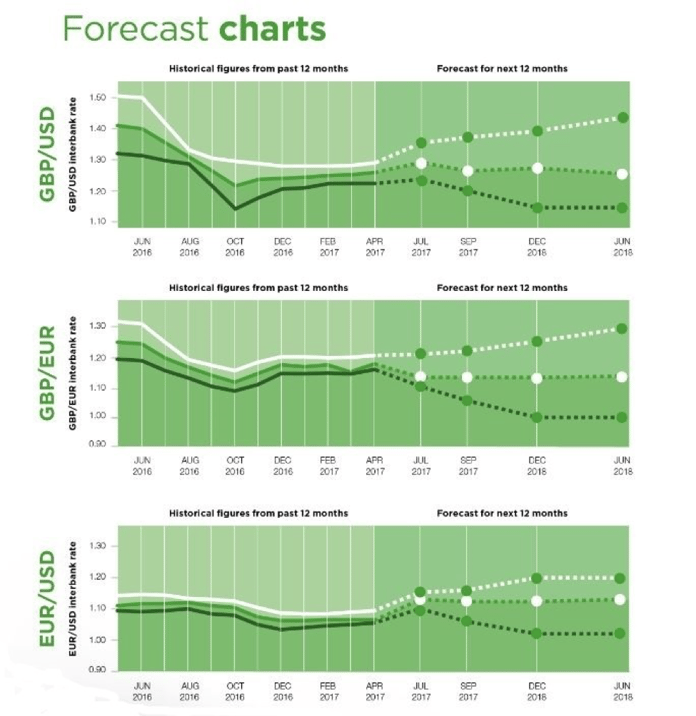 Exporting comes with many exciting opportunities for businesses looking to grow, and given that over US$ 11 trillion of manufactured goods were exported in 2016, up from US$ 8tn in 2006, it’s no wonder businesses are honing in to exporting. Trade Finance Global put together some tips for those who currently export, or perhaps are looking to export their goods / services overseas.
Exporting comes with many exciting opportunities for businesses looking to grow, and given that over US$ 11 trillion of manufactured goods were exported in 2016, up from US$ 8tn in 2006, it’s no wonder businesses are honing in to exporting. Trade Finance Global put together some tips for those who currently export, or perhaps are looking to export their goods / services overseas.

Figure 1: World merchandise trade by major product grouping, 2006-2016 (US$ billion), Source: WTO
This post will explore the following 4 tips for business owners to grow their export profiles:
- Finance Facility
- Currency Risk Mitigation
- Know Your Customer, Know Your Goods
- Understand Freight Terms And Shipping
1. Finance Facility
Many businesses experience a seasonal trade or payment cycle, that is, their business revenues are front ended to a particular time of year or purchase behavior, as opposed to regular recurring revenue throughout the year.
The time difference between getting finished goods to the buyer, expecting materials off suppliers, and receiving payment off the buyer or end customer might not be favorable to the business, meaning the business could suffer working capital issues, especially if there are operational and payroll costs which need to met each month.
Trade and supply chain finance are not new finance products in the market, but stand between buyers and sellers, financing the finance gap when exporting goods overseas. In this case, a trade financier will guarantee payment to the seller of goods on agreed terms, so they have reassurance of payment and can ship goods to the buyer knowing that they will receive payment.
Trade finance is the overarching term for the financing of international or domestic trade, but we’d recommend familiarizing yourself with products such as Letters of Credit, which are financial instruments used in cross-border trade.
For exporters, knowing the key parties involved in trade, the risks across the entire trade cycle, and how these can be reduced, are essential when looking to export.
2.Currency Risk Mitigation
Currency risk management is incredibly important during uncertain times and the currency volatility we have seen since the Brexit vote in 2017. According to the below charts, even three major banks can’t agree on the direction of major currencies in the coming year, therefore decision making can be difficult for those exporting to different markets and receiving payment in different currencies.

Figure 2: Netdania and Reuters Smart Estimate by StarMine, a division of Thomson Reuters. Forecast accurate as of 20 July 2017. Source: SCB
For those exporting on low margin products (e.g. commodities and raw materials), a small adverse swing in the currency such as a weakening of the USD while you export to the US, could have a significant ebitda impact on the business balance sheet.
In light of interest rate changes, eurozone challenges and geopolitical tensions, if the above predictions are correct for GBP/EUR, those exchanging £1m GBP into EUR could potentially have a ~€300k discrepancy if the exchange rate changes.
Fortunately, there are several forms of currency management tools and products a business can use to protect currency movements, and maybe even monetize on positive FX swings.
3.Know Your Customer, Know Your Goods
Doing due diligence on clients and customers is important for any business to ensure all parties comply with applicable laws, rules and regulations.
There are numerous challenges that exporters may face when looking to do ‘know your customer’ or ‘know your goods’ checks on agents, distributors and customers. Parties might change their names, use illicit agents or freight-forwarders instead of the end customers, or fail to describe the goods to try and circumvent export laws.
Exporters however can take some actions to help control and perform basic due diligence on customers and goods, which was put together by PwC.
- Double check the product classifications and trade tariff commodity codes, as well as the uses of these items
- Assess the end to end supply chain (third parties, agents, freight forwarders)
- Analyse and understand the business structure (entities, parent companies) of the parties you work with.
4.Understand Freight Terms And Shipping
Shipping and freight forwarding is full of fairly complex terms and acronyms, but understanding the basics of incoterms can give you an idea of how much it costs to ship goods and where the risks lie.
See our glossary of shipping terms here.
Within this, it’s important for businesses to understand the role of trade credit insurance, a policy which helps businesses to protect their accounts receivable and helping facilitate international trade.





